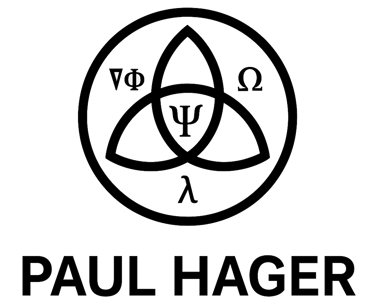Language Begins in the Body – Not in the Brain
Language doesn’t start in the brain — it starts in the body. This article offers a new view on language as vibration, not information. Discover how words resonate through tension, rhythm and coherence, and why what we feel in a sentence often matters more than what we understand.
POPULAR
Paul Hager
6/19/20255 min read


The First Sound
Before a child learns to speak, it cries. Not to say something, but to release something. Tension. Restlessness. A sensation the body can’t contain. The air pushes through, the throat opens, and sound emerges. No words. No message. Just vibration.
Language doesn’t begin in the brain. It begins in the body. Or deeper still — in the field beneath the body. That invisible undercurrent that shapes every movement, every reaction, every shiver or sigh. You don’t see it, but you know it’s there. It’s what makes a sentence stick in your chest or a voice soften your stomach.
What if language rises from there — from the field, not the mind? What if words are the surface ripples of something more fundamental? Not signals, but resonances. Not concepts, but tensions set into motion.
This article offers that shift. A reorientation. From language as code to language as current.
What is a field?
We should pause here and ask: what do we mean by "field"?
In physics, a field isn’t a flat surface. It’s a space where something invisible exerts force. Gravity is a field. So is magnetism. You can’t see a magnetic field, but you can feel it pull a paperclip. Around every object — large or small — there’s a pattern of force.
Now imagine there’s a similar kind of field around and through human experience. Not gravity or electricity, but tension. Movement. Direction. A patterned presence that carries sensation, memory, impulse, need.
In this view, you aren’t just a body or a mind. You are a field — one that moves, shifts, resonates. And sometimes, that resonance becomes sound.
Resonance Is the Key
Strum a guitar string in a quiet room, and a glass might ring in response. That’s resonance. Not because they touch, but because the frequency fits. One object vibrates, another responds. Across space. Through pattern.
That’s also what happens in conversation.
Someone speaks, and something in you stirs. You don’t yet “understand” it — but you feel it. Maybe your skin tingles. Your gut clenches. Your eyes well up. That’s not comprehension. That’s field alignment. Resonance.
We think communication is about meaning. But long before meaning, there is response. The body hears first.
Language as Wave, Not Word
In the beginning, there’s no grammar. No dictionary. Just sound.
A child laughs. A woman exhales. A man groans. These aren’t messages. They’re field movements. The body giving shape to what lives underneath — without knowing how or why.
Sound isn’t a container for meaning. It’s a movement of energy. A wave through air. A pulse through muscle. Every word you’ve ever spoken started there: as a wave in the field, translated into breath, shaped by lips.
Language isn’t invented. It’s emitted.
When Sound Becomes Symbol
Over time, patterns emerge. Certain sounds return. They start to point toward things. Not because we choose them to, but because the field starts to fold its movements into reference.
The word “water” isn’t random. It’s a sound pattern shaped by many bodies across time who looked at water and felt something similar. Coolness. Flow. Life. That feeling found its way into a rhythm, a breath, a mouth.
Words don’t just name things. They echo fields of experience.
One Field, Many Forms
But if all this is true — why do people speak so many different languages? Why does “water” become agua, su, mizu, eau?
Because while the field is shared, the form is local. Fields express themselves in community. The body learns to echo what surrounds it. The shapes of words are cultural. But the resonance behind them is not.
Meaning is universal. Language is not.
That’s why a love song in a foreign tongue can make you cry. Why a whispered prayer in a language you don’t know can still bring stillness. The shapes vary. But the frequencies — those belong to the field.
Coherence Is What Sticks
In physics, coherence means alignment. When the parts of a system are in sync, energy flows without resistance. No static. Just pure signal.
In language, coherence happens when a word — or a voice — fits the field it emerges from. That’s when a sentence “hits.” When it lands. When it doesn’t just say something — it does something.
That’s not because of vocabulary or sentence structure. It’s because the field behind the words is aligned. Clear. Unbroken.
We remember what resonates. Not what’s correct.
Why Grammar Isn’t Enough
Grammar is useful. It helps organize, clarify, structure. But grammar alone doesn’t carry truth. A perfect sentence can feel dead. And a clumsy phrase can break you open.
Language isn’t a rulebook. It’s a rhythm. A frequency. A pattern of tension in motion.
When someone says, “I don’t know anymore,” and it’s real — your body knows. You feel the drop in tone. The pause before breath. The field shifts. And no amount of grammar can fake that.
Poetry, Music, and Prayer
Some uses of language remember where it all began.
Poetry doesn’t explain — it vibrates. Music doesn’t define — it flows. Prayer doesn’t argue — it opens.
These forms bypass the brain. They go straight to the field. They live in breath, repetition, rhythm. They remind us that before we spoke to understand, we spoke to release. To connect. To align.
That’s why a poem can shake you. A melody can melt you. A prayer can steady you — even when you don’t believe in it.
They don’t speak to you. They speak through you.
The Body Knows First
Science has mapped language to parts of the brain: Broca’s area, Wernicke’s region. And yes — there’s activity there. But that’s not the origin. That’s the echo.
The body hears before the mind does. Goosebumps don’t wait for comprehension. A lump in your throat doesn’t need permission. Your stomach tightens long before a word makes “sense.”
Language travels through muscle and nerve before it reaches thought.
Language and Wounding
But resonance isn’t always welcome. Sometimes, a word slices. Not because of what it says, but because of what it reactivates.
That’s trauma.
A field that once broke — and hasn’t healed — will tremble when touched. Even a single syllable can be too much. Not because of meaning, but because of memory embedded in the body.
This isn’t metaphor. It’s physics. A broken current. A wave that cannot pass.
The Sentence That Heals
But if a word can wound, it can also restore. When tension, rhythm, and meaning align — something shifts. A new vector enters the field.
“I’m scared.”
“I don’t know.”
“I forgive you.”
These aren’t just sentences. They’re actions. When spoken with coherence, they reroute energy. They release what was locked. They realign direction.
Truth, in this sense, isn’t factual. It’s vibrational.
Language as a Bridge
Real conversation isn’t about understanding. It’s about contact.
When language flows from coherence, it opens space. Not for agreement, but for resonance. For recognition. For standing in the same field — even if on opposite shores.
To speak is to project. To listen is to open.
Community begins not in shared ideas, but in shared frequencies.
The Evolutionary Shift
Language wasn’t evolution’s way of making thought possible. It was the field’s way of connecting itself across bodies.
Before language, there was sound. Before sound, tension. Language emerged not to label the world, but to move within it. To align. To guide.
In that sense, it is not an invention. It is a turning point. A moment when the field became aware of itself — through symbol.
The Origin Is Silence
And yet, all language returns to where it came from.
Silence.
Not as absence — but as potential. In silence, everything is still unformed. Every word that breaks it is a gamble. A field-guess. A projection.
And so, what matters isn’t whether a sentence is true — but whether it resonates.
Because what resonates… draws incarnation closer to recognition.
